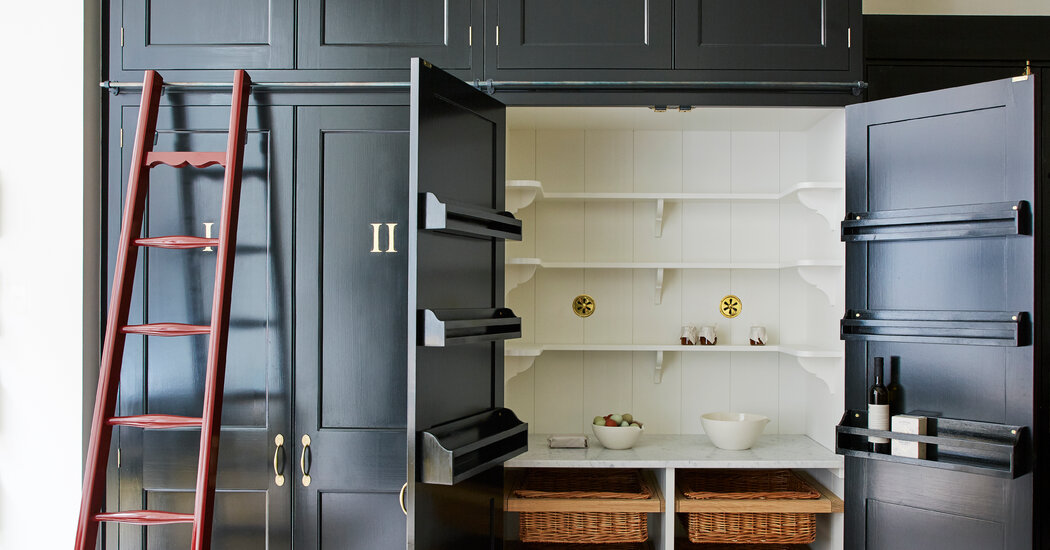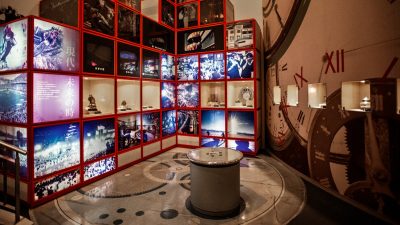Choosing cabinets for a kitchen renovation seems simple enough. They’re essentially boxes for holding dishes, glasses and cooking utensils. How hard could it be?
The decision-making process, it turns out, can be quite involved, since there are so many design details and features available — and considering the significant investment required. So it’s worth making sure that you end up with cabinets you’ll be happy with for a long time.
But how do you know what’s best for your home?
“Obviously, it depends on what you’re starting with,” said Nina Farmer, an interior designer based in Boston. “An apartment versus a house is very different.” So is a traditional home versus a modern one. Your ambitions for cooking and entertaining should also influence the design of your kitchen.
To help sort through the options, we asked interior designers and kitchen manufacturers how they help their clients find the best fit.
Focus on Drawers
Start by considering the lower cabinets: Some are made with doors and shelves, but many designers now prefer those outfitted with drawers.
“I find people get much more use out of something they can pull out, rather than a shelf,” Ms. Farmer said. With a drawer, you don’t have to stoop down to look inside, because all the contents are revealed when you pull it out.
If you prefer the look of a door, there’s a workaround: Add tray-like pullout drawers inside the cabinet, Ms. Farmer suggested, behind a door that opens on hinges.
“That generally has the same capacity,” she said. “Sometimes I’ll even have a bottom drawer that pulls out with the door and then place another inner drawer on top.”
Compared with a door-and-shelf design, she said, “it’s always more functional.”
Choose Upper Cabinets or Shelves
Eliminating upper cabinets in favor of open shelving above the counters has been a trend for years. But it’s not right for everyone.
“Some of our clients are very into exposed shelves,” said Christine Stucker, who runs Stewart-Schäfer, an interior design firm with offices in New York and Connecticut, with her husband, James Veal. “But I feel like we have to educate them that it has to be curated. You can’t throw all of your kids’ mugs and random stuff up there. Some people don’t understand that when you see those pictures of shelves on Pinterest or Instagram, someone has spent hours curating them.”
As a compromise, she and her husband frequently give homeowners both: some upper cabinets for basic storage and some open shelves where they can display favorite dishes. “It’s a balancing act of managing how much storage they need and how much they’re going to be able to keep up with the curated look,” Ms. Stucker said. “You want a kitchen to look clean and put-together, not in disarray.”
Decide Between Full Overlay and Inset Doors
One of the defining features of kitchen cabinets is whether they use full-overlay doors and drawer fronts, or inset ones.
Full-overlay doors are typically mounted with concealed European hinges and fully cover the edges of the cabinets when closed. Doors and drawer fronts can be positioned directly beside each other with only minimal gaps in between. Most Ikea and European cabinets are built this way, and the look is usually modern and sleek.
Inset doors and drawer fronts sit within a larger face frame that covers the edges of the cabinets behind, which spaces them out for a more traditional look with exposed hinges.
“There’s a proper wooden door with butt hinges, sitting within a frame,” explained Merlin Wright, the design director at Plain English, a British cabinetry company with U.S. showrooms in New York and Los Angeles. “Our approach is very traditional and based on Georgian and some Victorian originals that we see in the big old historic houses in the U.K.”
Some kitchens also have half-overlay doors, where the cabinets have a face frame partially concealed by overlapping doors, but that style has largely fallen out of fashion.
One type isn’t better than the others: The important thing is to figure out which look you prefer.
“When we’re working with traditional spaces, we love to use inset panels,” said Jensen Killen, who founded Logan Killen Interiors, in New Orleans, with Katie Logan Leblanc. “But a full-overlay slab front is great in a modern interior to give a very clean, streamlined look.”
Consider Panels for Your Appliances
Another current trend is covering refrigerators and dishwashers with cabinetry panels to make them almost disappear.
In most cases, when Stewart-Schäfer designs kitchens, Ms. Stucker said, “we really like to hide the appliances as much as possible, so the kitchen feels like another communal room and doesn’t read so much as a kitchen.”
To do so, they buy panel-ready appliances, which come with no exterior door but are designed to accept a custom cabinet door.
Of course, paneled appliances aren’t for everyone. “If someone cooks a lot and wants more of that chef’s kitchen look, we might just go with really nice stainless steel appliances,” Ms. Logan LeBlanc said.
Choose the Finish
Cabinet doors and drawer fronts are available in many finishes, including metal, solid wood, wood veneer, laminate and paint. When you’re choosing one, style preferences, durability and affordability come into play.
Stainless steel and solid wood doors, for instance, are likely to stand up to crashing children’s toys better than wood veneer, but they typically cost more. Laminate is extremely tough, but it might not provide the look you want. A painted finish offers flexibility, because the doors can usually be touched up or even repainted.
“With traditional hand-painted cupboards, you could not paint it for 20 years and it would start getting slightly shabby, but still look great,” Mr. Wright said, adding that most Plain English cabinets are delivered with a hand-painted finish. “You could repaint it, if you want, to make it look new again, or you could repaint it to change the color.”
Pay Attention to the Hardware
There are myriad handles to choose from, including knobs and bar pulls made in forms ranging from perfectly machined stainless-steel cylinders to cast-brass wabi-sabi grips. Many people mix knobs and bar pulls within a matching collection, using knobs on doors and smaller drawers, and bar pulls on larger drawers and appliance panels.
You can choose to celebrate the hardware with an expressive choice, de-emphasize it with a streamlined pick, or get rid of exterior hardware altogether by using touch latches or finger pulls.
Stewart-Schäfer frequently uses exposed pulls in traditional kitchens, choosing distinctive metal handles. But in modern kitchens, they often build cabinet doors with integrated grooves for fingers instead. “Unless it adds something to the overall look, we do try to avoid hardware,” Ms. Stucker said.
Inside the cabinets, most people want the latest internal hardware for maximum functionality, whether the kitchen looks traditional or modern, Ms. Logan Leblanc said. She advised looking for smooth-running, full-extension drawer slides with soft-close mechanisms that prevent drawers from being slammed.
Design the Insides
Drawers that are empty boxes provide basic storage space, but do little to keep things organized. Building them out with integrated or customizable storage compartments and dividers can help maximize space.
While it’s possible to add aftermarket drawer organizers later, it’s rare to find products that are a perfect fit, because drawers are made in so many sizes. The advantage of a well-designed kitchen system that includes dividers is that it comes with everything figured out, said Scott Hudson, the chief executive of the kitchen companies Henrybuilt and Space Theory.
“You get these functional components that are unique,” Mr. Hudson said. “So each drawer has a fitted system of containers, knife storage or ways to store cutting boards.”
That, in turn, makes the kitchen easier to keep tidy — because you can see where every item goes at a glance. “A good system automatically helps you stay organized because you don’t even have to think about it,” Mr. Hudson said.
Remember the Extras
Beyond basic cabinets, there are a few special features that can make a kitchen even more appealing. One is an integrated pullout drawer for trash and recycling, so you’re not jamming a bin under the sink.
Although garbage usually isn’t too exciting, Mr. Hudson described a trash pullout drawer as “a big level up.”
Countertop appliances like toasters, kettles and coffee makers also have a tendency to look like clutter, so another option is adding an appliance garage — a large cabinet with electrical outlets, usually at the same height as the counter.
“It’s a big thing right now,” said Mr. Veal, of Stewart-Schäfer. “We just completed one with a sliding door. It’s almost like a continuation of the kitchen counter, just behind a door.”
In one of Ms. Farmer’s projects, she installed a cabinet from Plain English that looks similar to a stand-alone armoire. “You open it up and there’s a marble countertop inside where you can hide your toaster and things like that,” she said.
Imogen Pritchard, the U.S. design director at Plain English, said these kinds of cabinets are increasingly popular.
“It’s a larder cupboard, which traditionally would have been a cool store for cheese, bread, butter and things that don’t actually need to be in the fridge,” Ms. Pritchard said. “But we realized that the larder cupboard actually makes the perfect breakfast cupboard.”
A breakfast cupboard equipped with a coffee maker, juicer and toaster could even be considered a lifestyle upgrade, she added: “We look at how we can help make mornings a bit easier, by giving everything its place.”
For weekly email updates on residential real estate news, sign up here.
Sumber: www.nytimes.com










